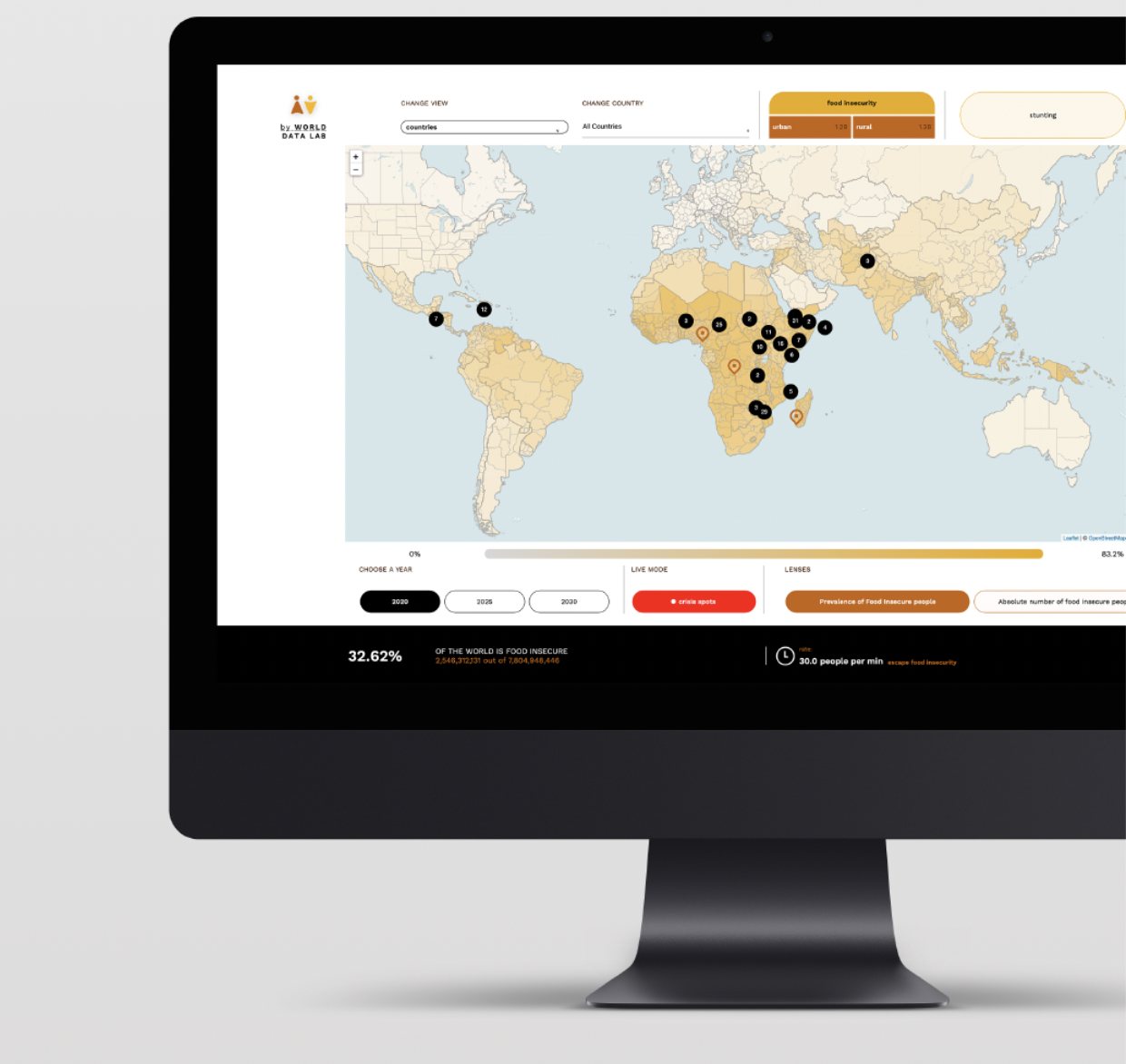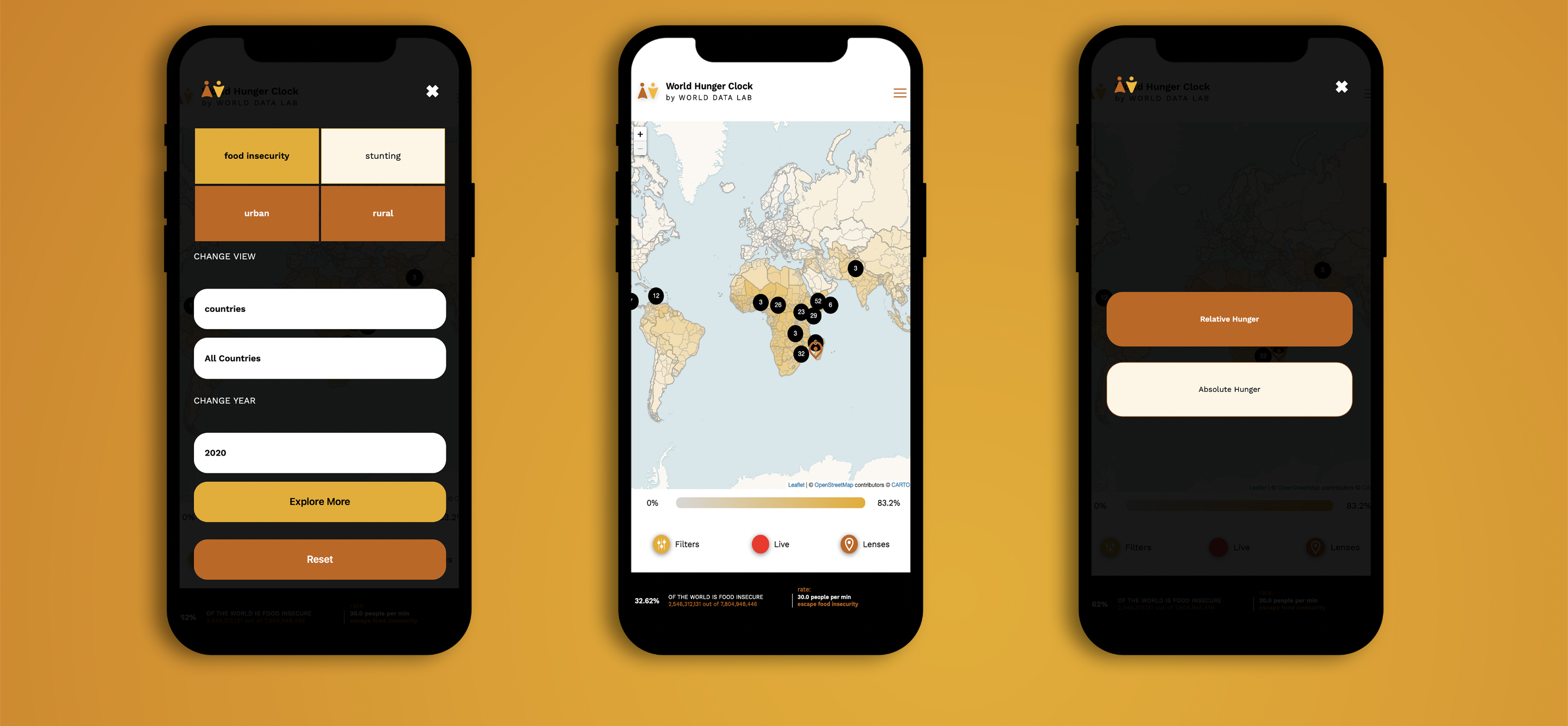Real Time Hunger Forecasts
Food Insecurity Experience Scale (FIES)
Today nearly 2.5 billion people, almost one-third of the world’s population, have some level of hunger due to lacking the resources to purchase the food they would like, while 800,000 people are severely food insecure, going entire days without eating at least once. Scientists use a new metric called the Food Insecurity Experience Scale (FIES), which measures peoples lived experiences of hunger, rather than just crude proxies for hunger. This new metric of measuring food insecurity was selected as one of the key indicators for the second Sustainable Development Goal of Zero Hunger.



Global Model and Methodology
In partnership with the International Fund for Agricultural Development (IFAD) and other Rome-based agencies, we developed a model to estimate the dynamics of food insecurity for the coming decade. Our model draws upon data from the novel Food Insecurity Experience Scale (FIES) developed by the Food and Agriculture Organization (FAO). As one of the most informative and cross-culturally valid metrics of food insecurity, the FIES measures people’s lived experiences of hunger and was selected as one of the key indicators for the second Sustainable Development Goal (SDG 2) of Zero Hunger.
Forecasts up to 2030
With the World Hunger Clock it is possible to explore the most accurate and granular estimates of food insecurity, including projections until 2030.
To provide a comprehensive picture of hunger, the World Hunger Clock also shows the metric of stunting, which is primarily a consequence of chronic hunger. The estimates on stunting originate from a research group called Local Burden of Disease Child Growth Failure Collaborators which summarized their work here. We extrapolated the high-resolution estimates on stunting to 2030, the end of the Sustainable Development Goal period.




